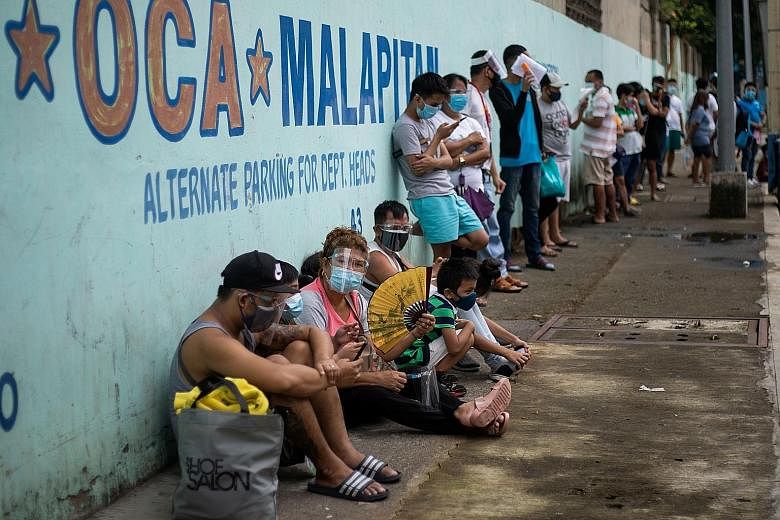Hospitals in Manila remain overwhelmed and health workers are still overworked two weeks after a strict coronavirus lockdown, but a "reboot" of the official response should see infections plateauing or even going down, the government and health experts said yesterday.
Starting today, shutdown restrictions that had been in place in Metro Manila and four nearby provinces since Aug 4 will be eased.
The curbs are being lifted, even though nationwide infections continue to top 3,000 a day, and more than 500 people are reported to have died this month alone.
That is one-fifth of the total death toll.
The Health Ministry said yesterday that infections had neared 170,000, with 4,836 new cases. More than 2,680 people have died.
The Philippines currently has the most number of Covid-19 infections in South-east Asia.
"Right now, we're still receiving so many reports about how overwhelming the waiting time is at emergency departments, that (the departments) are filled to the brim and can no longer admit patients," said Dr Pauline Convocar, president of the Philippine College of Emergency Medicine.
Four out of every five hospital beds for Covid-19 patients in the capital are already occupied, according to the Health Ministry's daily bulletin.
President Rodrigo Duterte reimposed quarantine measures early this month in Manila and four nearby provinces - home to about 27 million or one-quarter of the country's population - after more than 160 medical groups said the health system was on the verge of collapse.
The Philippines went through one of the longest shelter-at-home restrictions in the world, from mid-March to May.
But since emerging from the lockdown on June 1, confirmed infections in the archipelago had increased more than fivefold and surged past 160,000.
That made the Philippines the epicentre of the pandemic in South-east Asia, dislodging Indonesia.
Dr Anna Lisa Lim, an infectious and tropical diseases specialist at the Philippine General Hospital, said the recent two-week lockdown probably slowed the spread of the virus and gave hospitals a "timeout".
But that was not the main goal, she added.
"The more important, primary goal was to regroup and try to see whether there was a more concrete response to symptoms of an overwhelmed system.
"That was achieved to a certain extent. It opened up a dialogue," she said.
She added that this led to a "reboot" in the government's response.
This "refreshed approach" will see the government shoring up its grassroots response, so that those who fall sick do not react by going straight to hospital for treatment, she said.
Mr Duterte's spokesman Harry Roque told reporters earlier that the government will employ pooled testing, and that contact tracers will make house calls, so that more asymptomatic cases can be found in communities and workplaces, where most clusters of infected cases are surfacing.
More community treatment and isolation facilities will be built, so that mayors and other grassroots leaders can respond more effectively as testing uncovers outbreaks in their areas, he added.
Mr Roque said businesses allowed to reopen will also be held to higher health standards.
Professor Guido David, who heads a University of the Philippines' research team that tracks Covid-19 statistics, said that if the government follows up on the changes in its pandemic response, the Philippines could soon see a "flattening" of Covid-19 cases.
He also said the R-naught, which describes the virus' infection rate, had fallen from 1.5 last month to just 1.1 this month. If it falls below 1, "that means we've flattened the curve", he added.
But Dr Benjamin Co, an infectious diseases specialist, said the R-naught alone could not be used as a metric.
Apart from keeping it below 1, cases should also drop to just 200 a day from a current average of more than 3,000, and the proportion of those testing positive should slide to 5 per cent, he added.
"Only when we achieve those and sustain it for at least 14 days can we call it a victory," he said.

